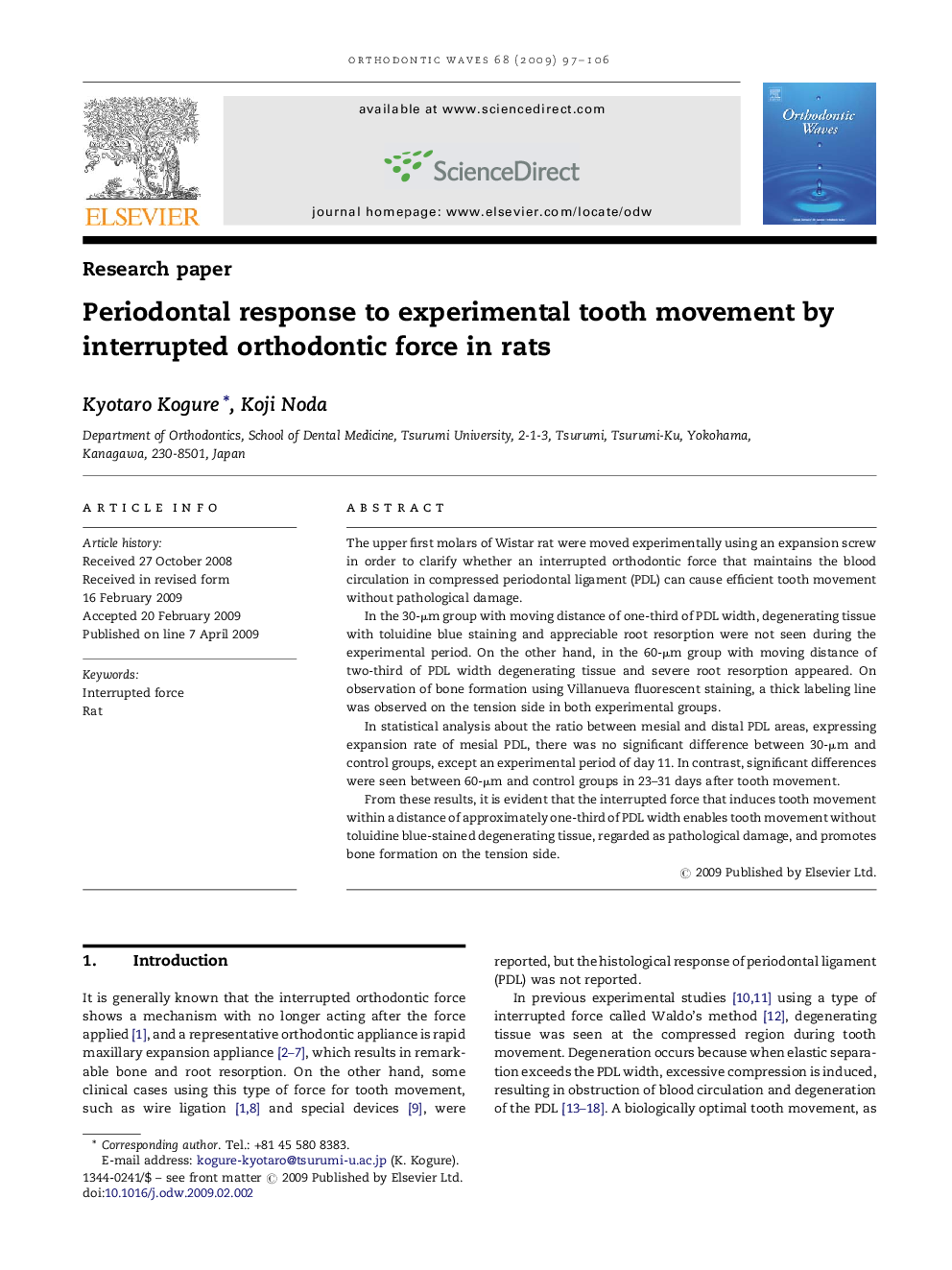| Article ID | Journal | Published Year | Pages | File Type |
|---|---|---|---|---|
| 3170498 | Orthodontic Waves | 2009 | 10 Pages |
The upper first molars of Wistar rat were moved experimentally using an expansion screw in order to clarify whether an interrupted orthodontic force that maintains the blood circulation in compressed periodontal ligament (PDL) can cause efficient tooth movement without pathological damage.In the 30-μm group with moving distance of one-third of PDL width, degenerating tissue with toluidine blue staining and appreciable root resorption were not seen during the experimental period. On the other hand, in the 60-μm group with moving distance of two-third of PDL width degenerating tissue and severe root resorption appeared. On observation of bone formation using Villanueva fluorescent staining, a thick labeling line was observed on the tension side in both experimental groups.In statistical analysis about the ratio between mesial and distal PDL areas, expressing expansion rate of mesial PDL, there was no significant difference between 30-μm and control groups, except an experimental period of day 11. In contrast, significant differences were seen between 60-μm and control groups in 23–31 days after tooth movement.From these results, it is evident that the interrupted force that induces tooth movement within a distance of approximately one-third of PDL width enables tooth movement without toluidine blue-stained degenerating tissue, regarded as pathological damage, and promotes bone formation on the tension side.
